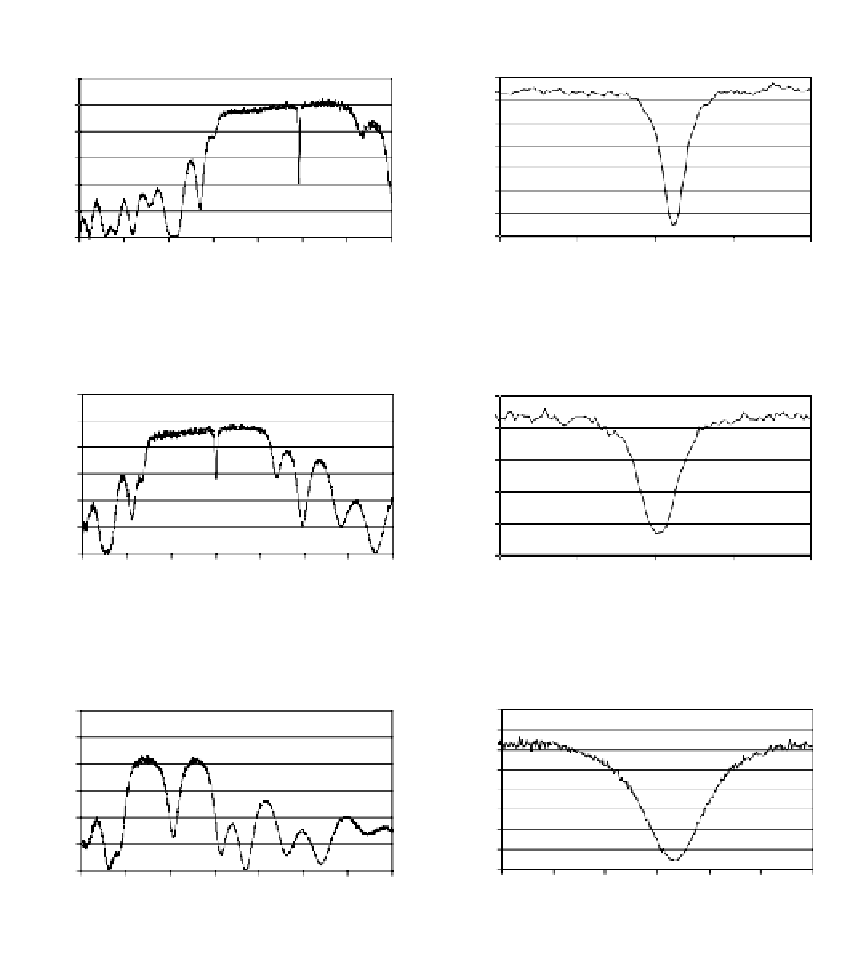Biomedical Engineering Reference
In-Depth Information
λ
/2 Microcavity
22/77mA/cm
2
or 67/87 %P
11 mirror periods
λ
/2 Microcavity
22/77mA/cm
2
or 67/87%P
11 mirror periods
(a)
(b)
105
120
95
100
85
80
75
60
65
40
55
Q=46
20
45
0
35
550
600
650
700
750
800
850
900
785
790
795
800
805
Wavelength (nm)
Wavelength (nm)
λ
/2 Microcavity 11 Periods
22/77mA/cm
2
or 67/87%P
95 nm KOH blue-shift
λ
/2 Microcavity11 Periods
22/77mA/cm
2
or 67/87%P
95 nm KOH blue-shift
(c)
(d)
120
100
100
90
80
80
60
70
40
60
Q=23
20
0
50
550
600
650
700
750
800
850
900
690
695
700
705
710
Wavelength (nm)
Wavelength (nm)
λ
/2 Microcavity 11 Periods
22/77mA/cm
2
or 67/87%P
143 nm KOH blue-shift
λ
/2 Microcavity 11 Periods
22/77mA/cm
2
or 67/87%P
143 nm KOH blue-shift
(e)
(f)
100
120
90
100
80
80
70
60
60
50
40
40
Q=4
20
30
20
0
620
630
640
650
660
670
680
550
600
650
700 750
800
850
900
Wavelength (nm)
Wavelength (nm)
FIGURE 11.6
Optical reflection spectra as a function of 1.5-mM KOH exposure. (a,b) As-etched, (c,d) 30 min, and (e,f) 1 h 45
min. Data illustrates for short exposures, <30 min, the high-quality cavity remains. Longer exposures (>1 h)
cause a more severe degradation of cavity quality (Q-factor).
construction of simple geometric models for its incorporation into the PSi matrix.
Furthermore, extensive analysis of the performance of GST in a colorimetric assay
(employing 1-chloro-2,4-dinitrobenzene (CDNB)) was available in the literature,
29
allow-
ing us to benchmark the performance of our systems against those studied by others.
The first order of business was to employ the enzyme assay as a means of determin-
ing the amount of GST that could be immobilized in PSi as a function of sample depth.
30
Single-layer mesoporous devices were etched using standard conditions; thickness var-
ied in the range of 0.03-8.8
m (as determined by gravimetric and SEM analysis) by
varying the etch time. Samples were then subjected to postetch KOH treatment to





